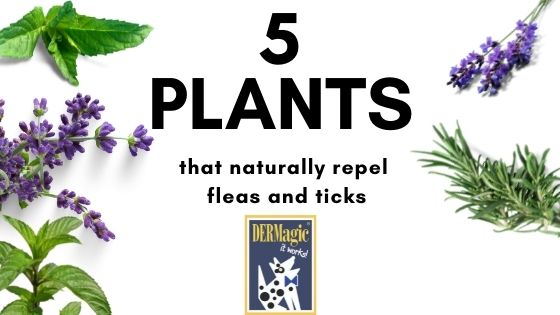
Summer is making a big splash across the United States this year. States that are normally hot and dry are suddenly saturated and flooding, while normally cool areas are suffering from unprecedented heat waves. This extreme weather is a recipe for increased insect activity (specifically fleas and ticks).
Luckily, there are plenty of natural ways to make your yard less appealing to pests.
Whether you have a patio area or a full garden, there are many plants to help naturally repel fleas and ticks.
When choosing plants to grow in your garden, be careful to understand the properties and how it may impact your pet or wildlife. Some plants are illegal to grow in your region, and still others may have pest-repelling qualities, but be harmful to pets or people. These flea and tick-repelling herbs are some of the safer ones to plant in and around your home.
Mint
Spearmint and peppermint are both excellent additions to your garden or patio and both have insect-repelling qualities. However, these plants are notorious for “spread” (taking over an area), so be sure to keep them in containers unless you want your garden overrun. Mint is also ideal for that summer mojito!
Catnip
Like all herbs in the mint family, catnip is an excellent natural repellent. If you have a “catio” or kennel, catnip is great for growing along the fence line to act as a natural flea and tick boundary. Did you know that catnip is safe for dogs as well? This unique herb can give your pets a sense of well-being and help calm them down (ideal during fireworks season).
Sage
As yet another member of the mint family, sage is an excellent way to combat bugs (especially mosquitoes). Sage can be found just about anywhere in the USA. While it’s most effective when burned, it does have some great insect-repelling qualities in its natural form. Toss a handful on the barbecue to keep mosquitoes away from your next picnic.
Lemongrass
Lemongrass is one of the most effective natural repellents since it is naturally high in citral and geraniol. Recent studies suggest lemongrass is even more effective than DEET. The topical application of lemongrass essential oil provides 74–95% protection for 2.5 hours against two types of mosquito (but remember it's not safe to use directly on pets)!
We are seeing many other studies done these days and we love seeing the results coming in. Try our Lemongrass and Mint Conditioner bars to keep your dogs smelling and looking great!
Rosemary
One of our favorite ways to use essential oils is our Rosemary and Mint shampoo and conditioner bars. Rosemary is also wonderful in your garden and studies show that it can repel insects. This is a wonderful option for your garden if you live in a hot, dry area.
Lavender
Lavender is not only ideal for relaxation, it can help repel insects! Plant in areas that your pets frequent and be sure to keep a bouquet in the house. This is one plant that is safe for people and pets, so don't worry if your dog eats a bit of it.
Bonus: Food-grade Diatomaceous Earth
Food-grade Diatomaceous Earth (DE) is ideal for sprinkling around your patio to keep fleas, ticks and ants from entering your home. This natural element consists of the remains of a fossilized type of algae, called diatoms. They work as a natural pest control because their microscopic pieces are razor-sharp and they cut the exoskeleton of insects. Once the outer layer of the insect has been pierced, the insect will dehydrate and die.
While it is deadly to insects, it is harmless to humans, pets, birds, and even fish! To us, diatomaceous earth just looks and feels like a soft, fine powder. Sprinkle around your patio area, food bowls, and on carpet to help remove existing fleas and ticks. You can even apply directly to your pet's fur.
Summer is here, but it doesn't have to mean bug bites, fleas or tick removal. Plants that help naturally repel these pests can make your summer gardens even better.

